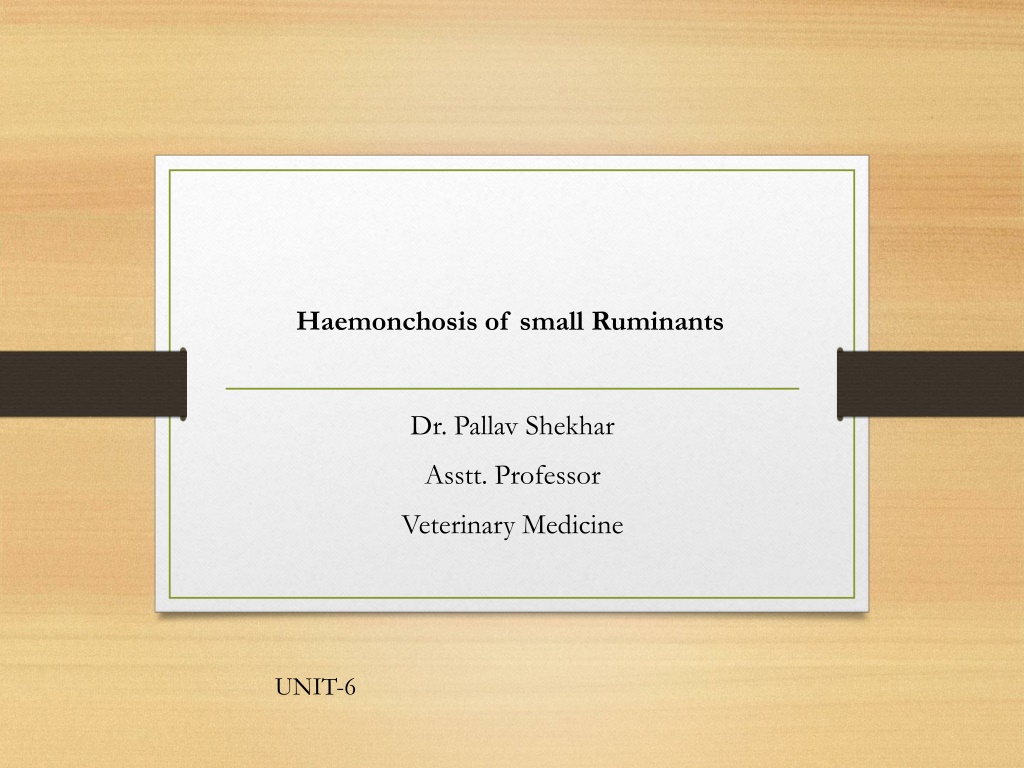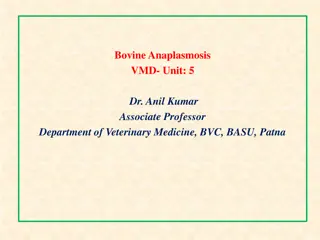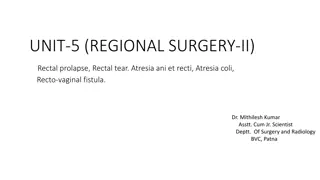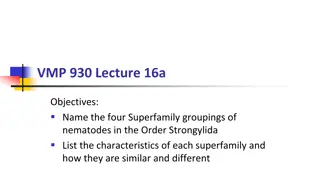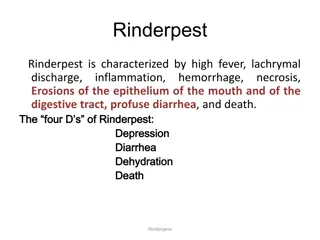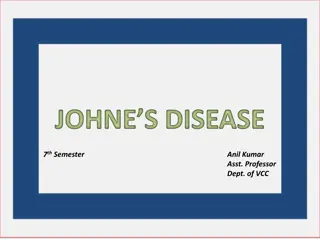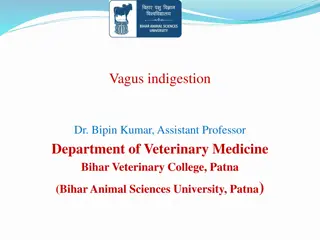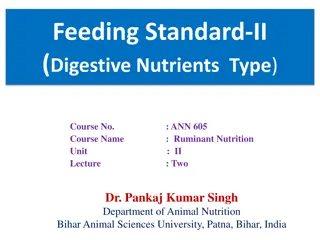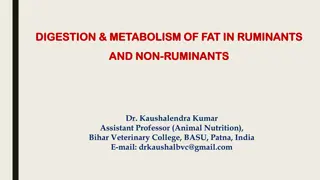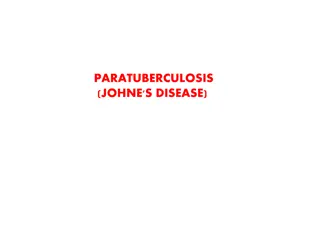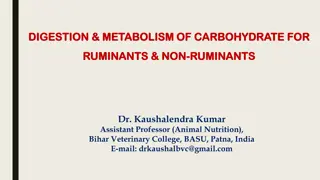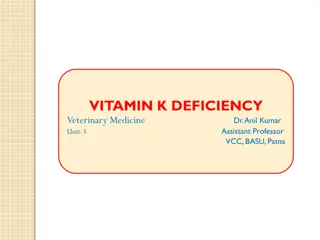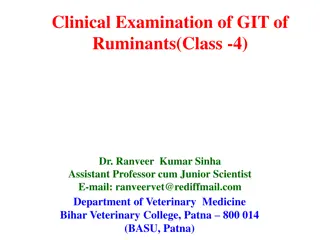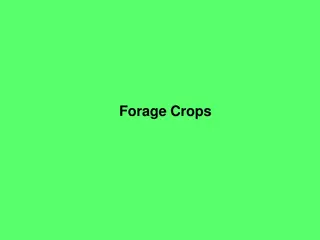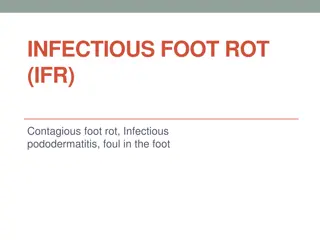Understanding Haemonchosis in Small Ruminants
Haemonchosis is a significant disease affecting sheep and goats that is caused by blood-sucking parasites. This condition leads to anemia, debility, and pain in infected animals. The etiology involves various species of Haemonchus affecting different animals. Understanding the life cycle, characteristics of larvae, and pathogenesis of Haemonchosis is crucial for effective management and prevention in small ruminants. Daily blood loss and anemia are key outcomes of this parasitic disease, ultimately leading to potential death in animals.
Uploaded on Sep 17, 2024 | 0 Views
Download Presentation

Please find below an Image/Link to download the presentation.
The content on the website is provided AS IS for your information and personal use only. It may not be sold, licensed, or shared on other websites without obtaining consent from the author. Download presentation by click this link. If you encounter any issues during the download, it is possible that the publisher has removed the file from their server.
E N D
Presentation Transcript
Haemonchosis of small Ruminants Dr. Pallav Shekhar Asstt. Professor Veterinary Medicine UNIT-6
Haemonchosis Large stomach worm Twisted worm Wire worm Barbers pole worm Lancet worm
Introduction It is mainly a disease of sheep and goat It is a blood sucking parasite of cattle, sheep and goat. It is characterized by anaemia, anasarca, debility and pain.
Etiology H. Contortus- Sheep and Goat H. placei- Cattle H. bubalis- Buffalo H. longistipes- Camel
Small Ruminants Cattle Graze together Cross infection
Life cycle Haemonchus (1-1.25cm, red and red white) Ex-sheathment in the rumen Ingestion by host L3 stage (Infective) Emergence of L4 stage Abomasum Egg laying (10,000eggs/day) Embryonationation in environment Affect Abomasal gland Adult worm emerge L1 stage L2 stage EGG LAYING
Characteristic of L3 The larvae (L3) migrate away from the faecal pellets and some may travells 90 cm within 24 hrs. But majority of them are found within 10cm of the faecal mass. The motility of the L3 stage larva is maximum in the hot and moist condition. It is susceptible to cold and dessication.
Pathogenesis The histology and biochemical changes associated with Ostertagia spp. also occurs with Haemonchosis. But the Vigorous blood sucking by the 4th larval stage (L4) and adult worm in the abomasum differentiate the pathogenesis of haemonchosis from that of Ostertagiosis
As a result of daily loss of whole blood about 0.05ml blood/worm/day. There is Haemorrhagic anaemia & due to continuing loss of R.B.C and compensatory erythropoiesis there is depletion of Fe from Fe store. Death of Animal occurs from blood loss or from anaemia accompanied by hypoproteinemia.
Clinical Findings Sudden Death Blenched mucous membrane Bottle Jaw Melena Recumbency
Predisposing factor Over Crowdin g Lush green pasture Low plane of nutrition Hot and humid climate
Clinical Pathology EPG> 10,000 High pH of Abomasum High plasma pepsinogen level and gastrin level Low protein and Hb
Necropsy findings Presence of large no. of readily visible H. Contortus in abomasum Hyperplastic gastritis Hydrothorax and ascites
Diagnosis Epidemiological study and clinical signs. EPG Low Hb Presence of barbers poles appearance of female worm as diagnostic appearance of Haemonchosis. FAMACHA technique
FAMACHA FAMACHA (FAffa MAlan CHArt) is a method whereby only certain sheep or goats in a flock are selected for treatment against wireworm (also known as barbers pole worm, Haemonchus contortus). Sheep/goats are selected for treatment based on the degree of anaemia they are displaying in their mucous membranes. In turn, the degree of anaemia is assessed through a colour guided chart.
Objectives Use as guide to determine which animals to treat. Significantly reduces number of treatments given when compared with conventional drenching practices. Should significantly decrease the rate of development of anthelmintic resistance.
Since primary impact of H. contortus is anemia, one can indirectly measure parasite burden (and need for treatment) by measuring anemia. Only useful where H. contortus is the primary parasite species.
Eye color chart with five colour categories Compare chart with colour of mucous membranes of sheep or goat. Classification into one of five colour categories: 1 not anemic 5 -- severely anemic
Differential Diagnosis Snake bite Lightening strike Enterotoxaemia Coccidiosis
Differential diagnosis Ostertagia & Trichostrongylus Heamonchosis Mild anaemia Severe anaemia Profuse watery diarrhoea and faeces are dark green to yellow in colour Dark tarry coloured faeces
Prevention and Control Closantel- 7.5-10mg/kg orally Benzimidazole- 5-10mg/kg Morantel (Banminth)- 5-7mg/kg Late winter treatment remove Hypobiotic larva so reduces the parasite burden. Alternate grazing Spray of Urea soln. to kill the larvae Vaccination by irradiated L3 and its sheathing fluid. Self cure phenomenon.
